Marketing Communication Plan Samples
-
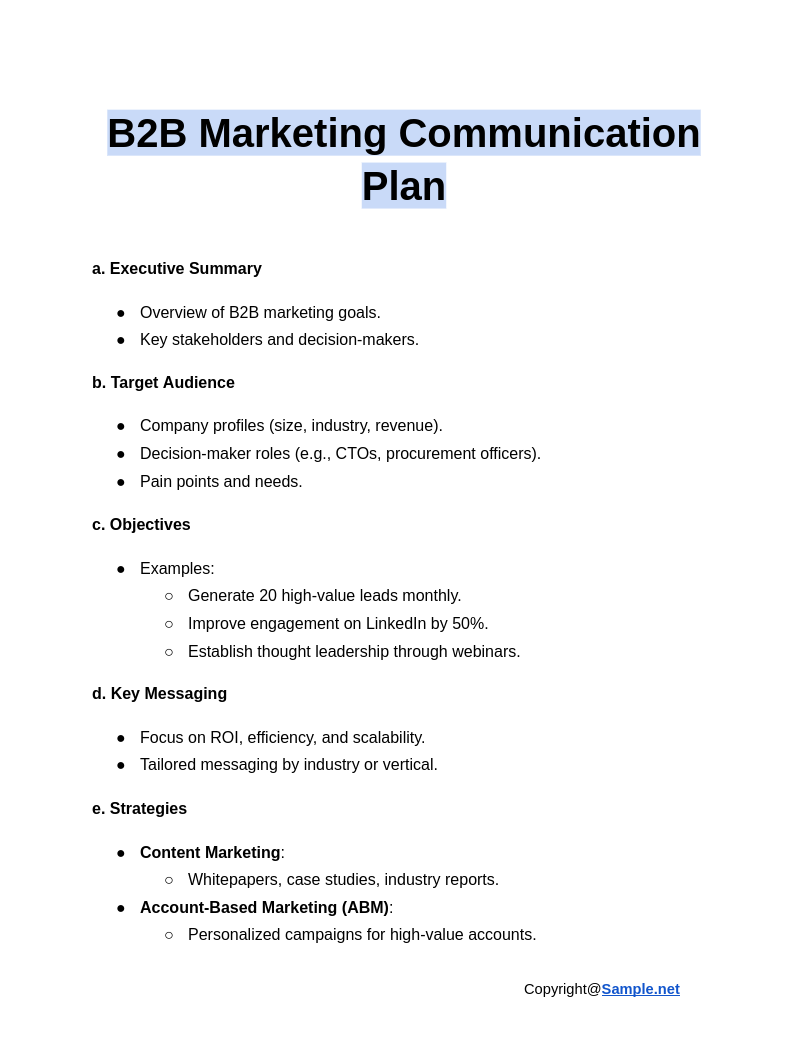
B2B Marketing Communication Plan
download now -
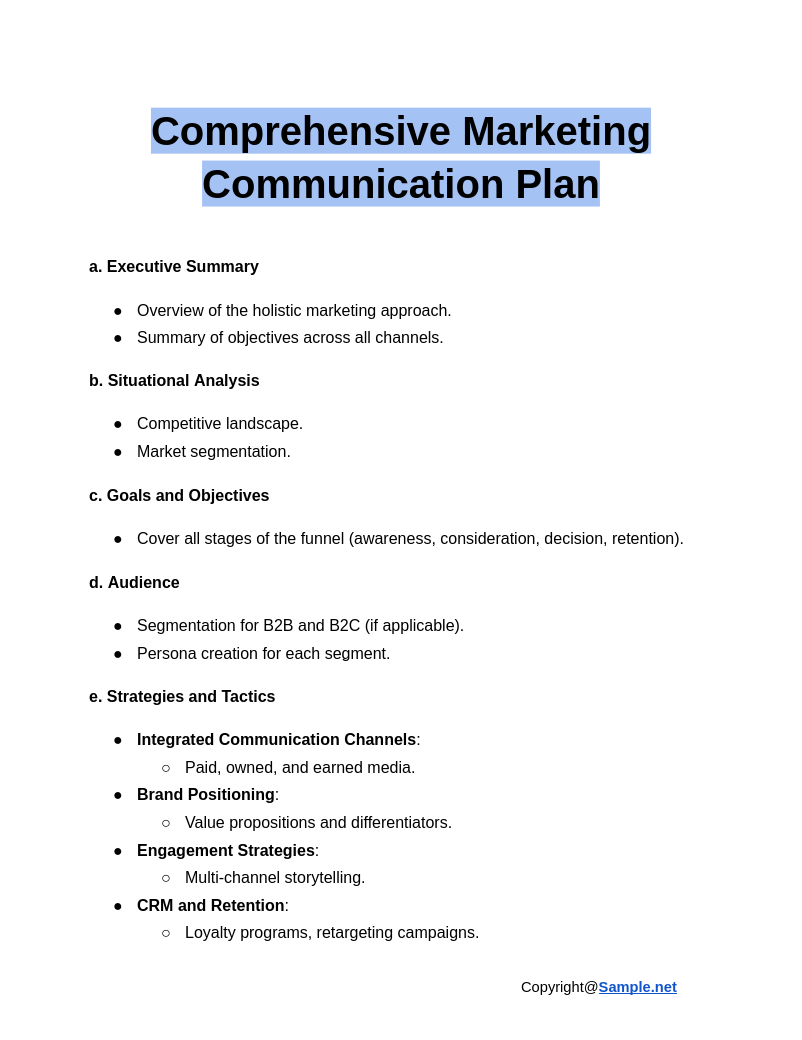
Comprehensive Marketing Communication Plan
download now -
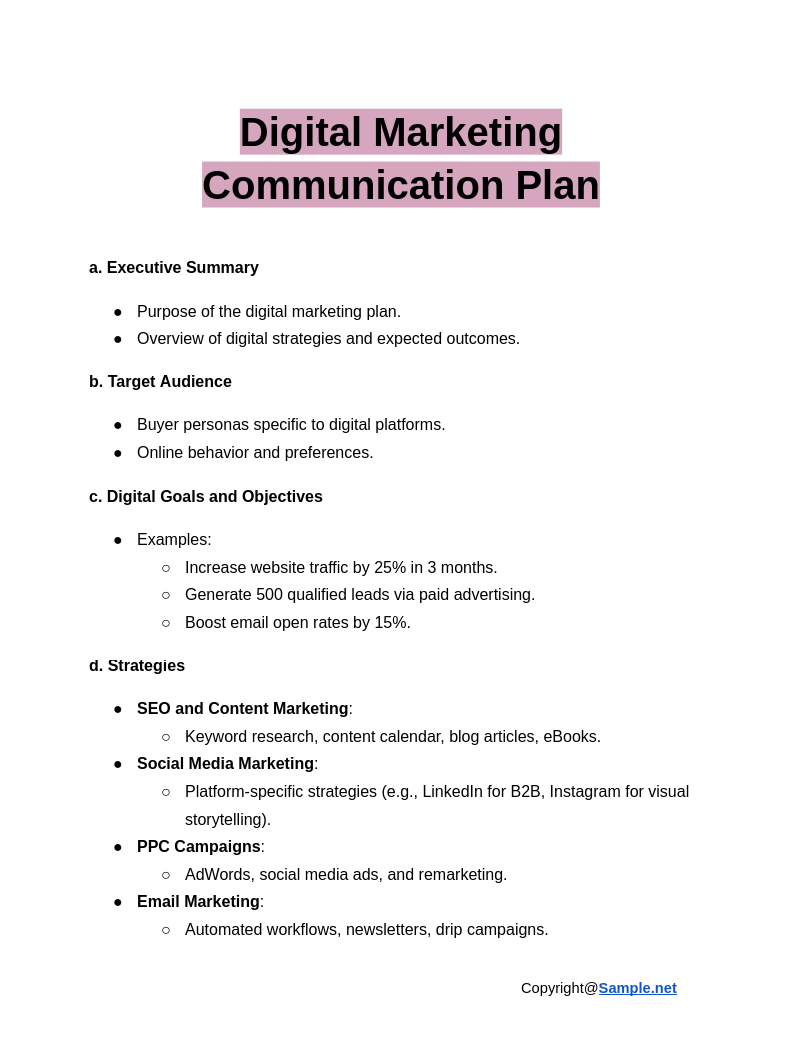
Digital Marketing Communication Plan
download now -
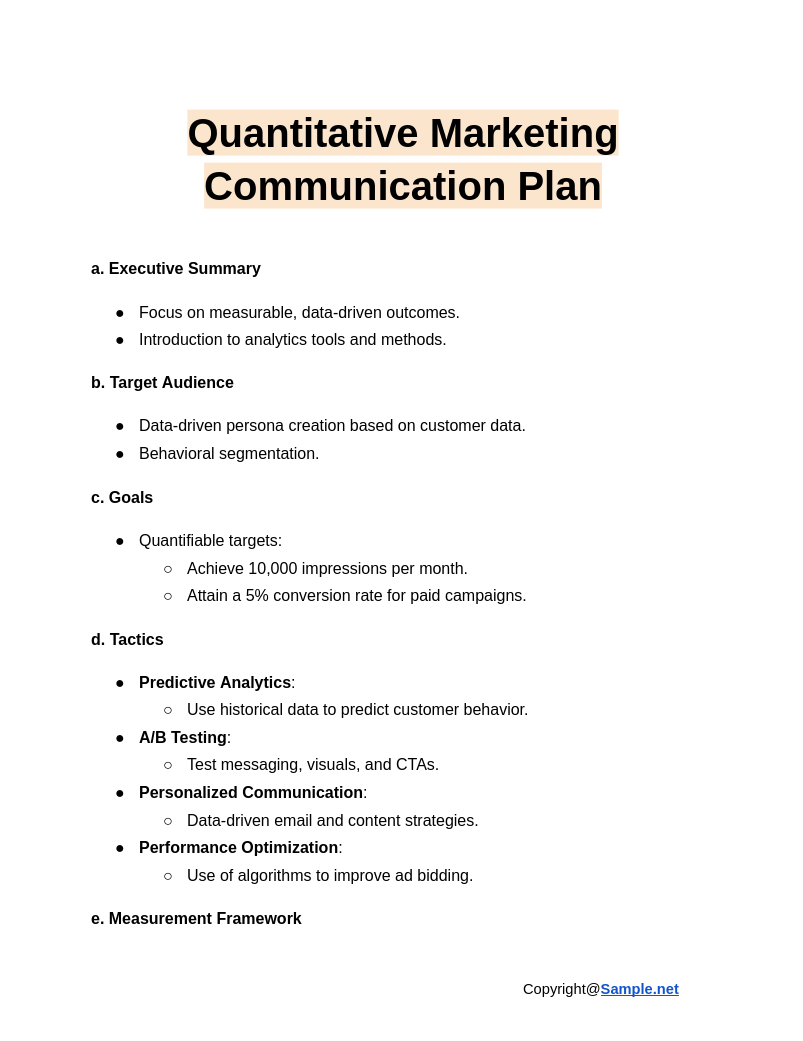
Quantitative Marketing Communication Plan
download now -
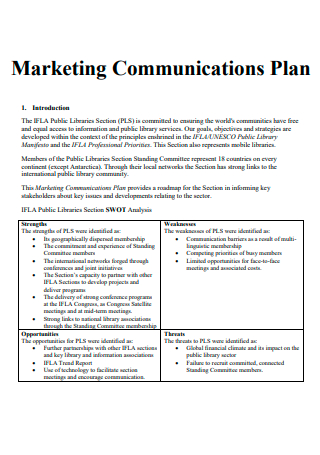
Marketing Communications Plan Template
download now -
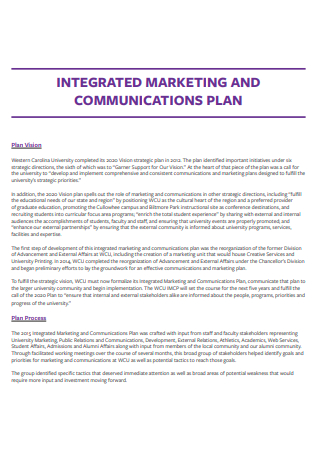
Integrated Marketing and Communications Plan
download now -
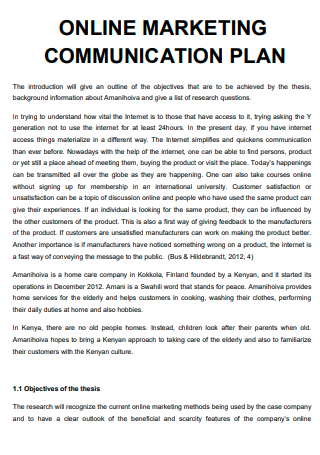
Online Marketing Communications Plan
download now -

Strategic Marketing and Communications Three-Year Plan
download now -
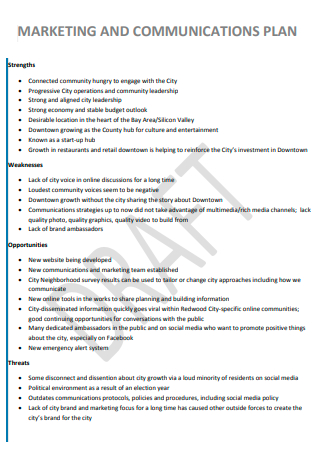
Draft Marketing Communications Plan
download now -
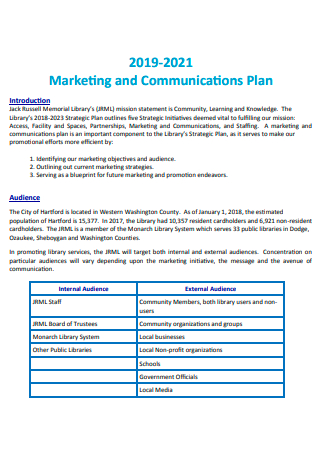
Marketing and Communications Plan Example
download now -
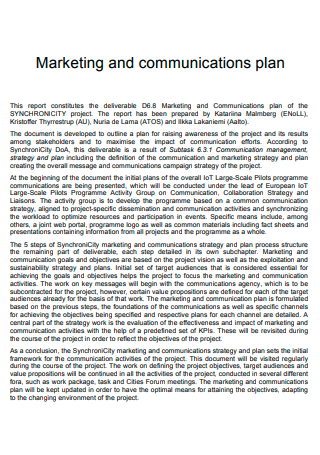
Marketing and Communications Plan in PDF
download now -
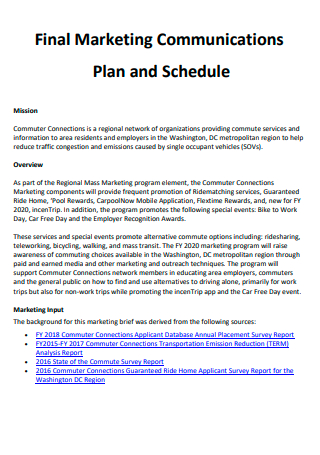
Final Marketing Communications Plan and Schedule
download now -
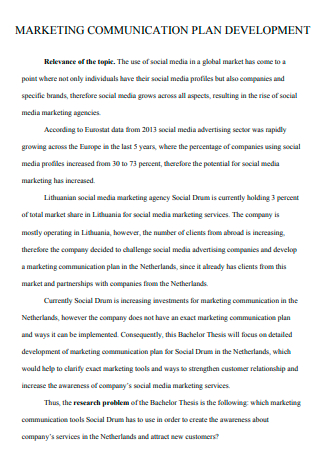
Marketing Communications Plan Development
download now -

Integrated Marketing Communications Plan For Uber Technologies
download now -
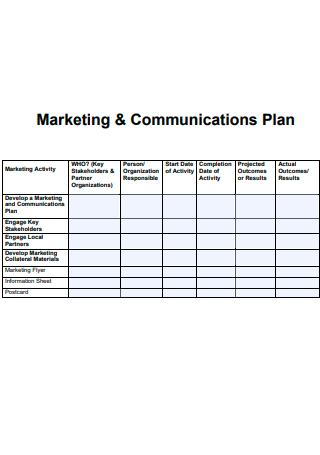
Standard Marketing and Communications Plan
download now -
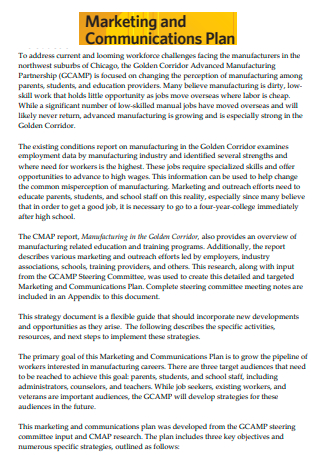
Sample Marketing Communications Plan
download now -

Formal Marketing Communications Plan
download now -
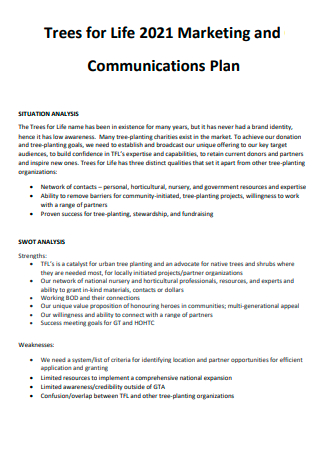
Tress For Life Marketing Communications Plan
download now -
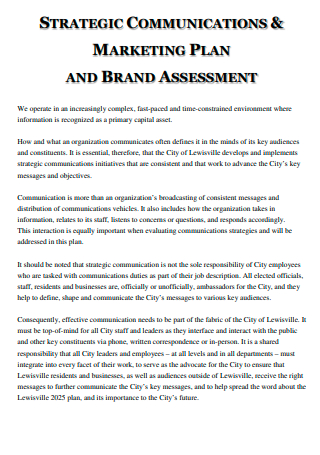
Strategic Marketing Communications Plan and Brand Assessment
download now -
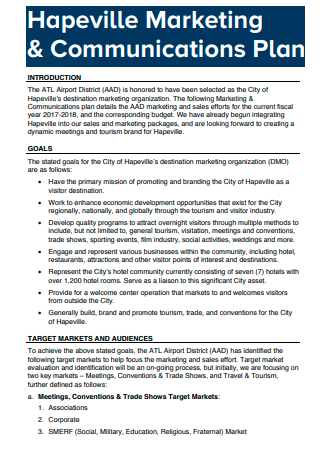
Simple Marketing Communications Plan
download now -
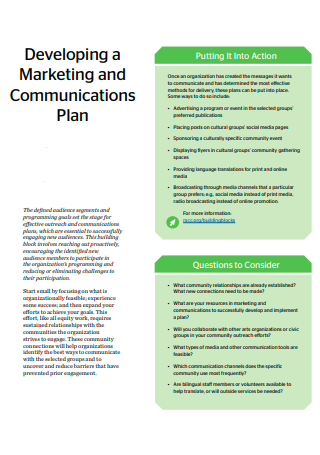
Developing Marketing Communications Plan
download now -
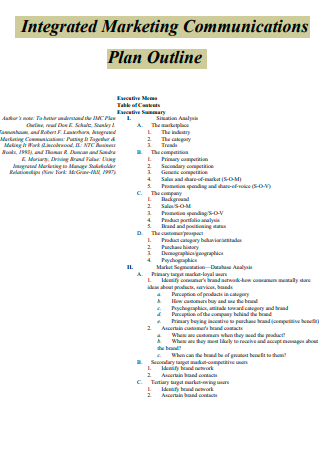
Integrated Marketing Communications Plan Outline
download now -
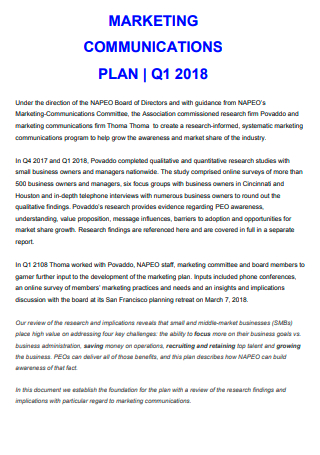
Basic Marketing Communications Plan
download now -
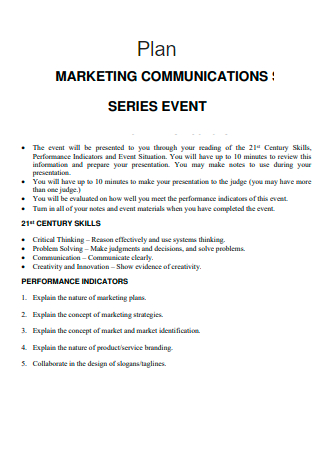
Marketing Communications Series Event Plan
download now -
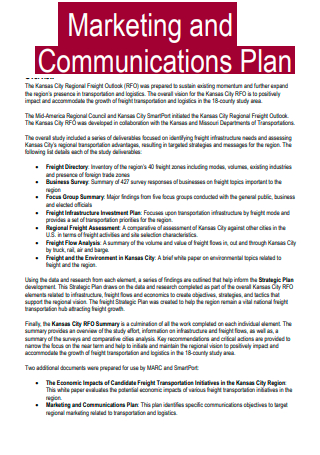
Marketing Communications Plan Format
download now
FREE Marketing Communication Plan s to Download
Marketing Communication Plan Format
Marketing Communication Plan Samples
What is a Marketing Communications Plan?
Benefits of Marketing Communications
How to Create a Marketing Communication Plan
FAQs
What role does marketing communication play?
What are marketing communication strategies?
What is successful customer interaction?
What role does audience segmentation play in a communication plan?
How does a marketing communication plan impact brand consistency?
What challenges can arise in implementing a communication plan?
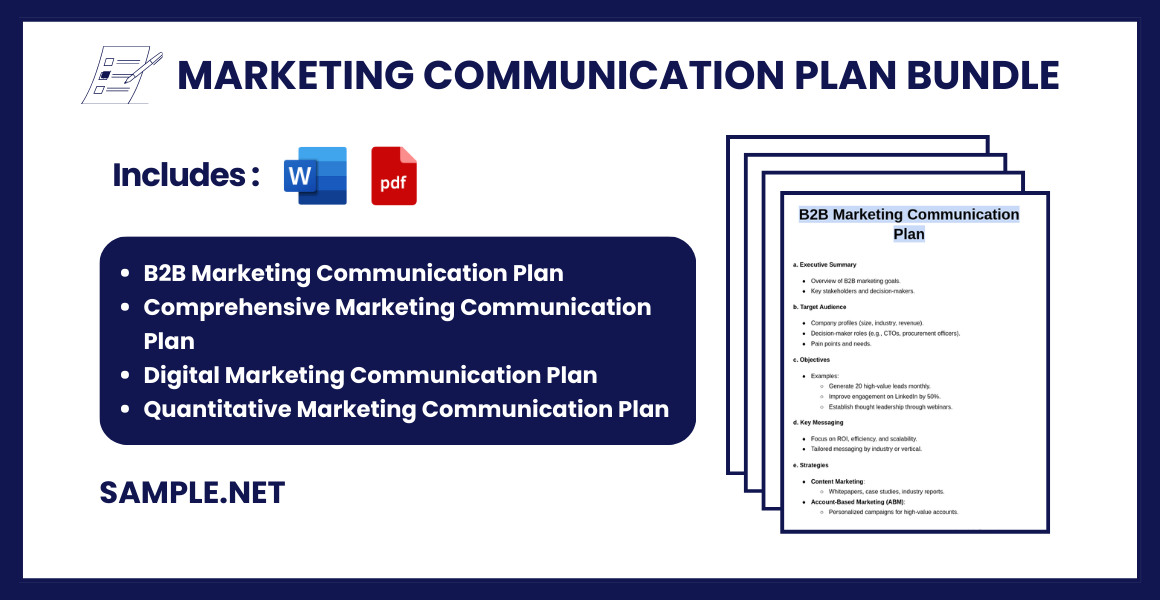
Download Marketing Communication Plan Bundle
Marketing Communication Plan Format
1. Executive Summary
- Brief overview of the communication plan.
- Key objectives and expected outcomes.
- Alignment with overall marketing and business goals.
2. Situation Analysis
a. Market Overview
- Current market conditions.
- Industry trends and dynamics.
b. SWOT Analysis
- Strengths
- Weaknesses
- Opportunities
- Threats
c. Target Audience
- Demographic and psychographic profile.
- Key audience insights.
- Buyer personas.
3. Goals and Objectives
- Define measurable goals (SMART: Specific, Measurable, Achievable, Relevant, Time-bound).
- Example objectives:
- Increase brand awareness by 20% within six months.
- Generate 15% more leads through digital campaigns.
- Enhance customer engagement by increasing social media interaction by 30%.
4. Key Messages
- Core message themes.
- Supporting points.
- Tailored messages for different audience segments.
5. Communication Strategies
a. Communication Channels
- Advertising (print, TV, digital).
- Social media platforms.
- Content marketing (blogs, whitepapers, case studies).
- Public relations and media outreach.
- Events and sponsorships.
- Direct marketing (email, SMS).
b. Integration of Channels
- Multichannel coordination to ensure consistency.
6. Tactics and Implementation Plan
a. Campaign Timeline
- Detailed schedule of activities.
- Milestones and deadlines.
b. Resource Allocation
- Budget breakdown.
- Team roles and responsibilities.
c. Creative Execution
- Content themes and visuals.
- Examples of ad formats, social posts, and media content.
7. Budget
- Total budget allocation.
- Specific expenditures by channel.
- Contingency funds for adjustments.
8. Performance Metrics
- KPIs to measure success (e.g., ROI, impressions, CTR, engagement rates).
- Tracking and reporting methods (Google Analytics, CRM tools, social media insights).
9. Evaluation and Adjustment
- Review process to evaluate effectiveness.
- Feedback loop for continual improvement.
- Adjustments to improve future campaigns.
What is a Marketing Communications Plan?
A marketing communications plan is a strategy for informing your target audience about your product or service. The plan must include the target market or the specific group identified for a product or service when sold. Statistics indicate that 93% of marketers globally use social media for business. In the United States, in 2022, about 92% of marketers working for organizations with more than 100 employees are anticipated to begin using social media for marketing. You can also see more on Integrated Marketing Communications Plan.
Benefits of Marketing Communications

Marketing Communications provides B2-B organizations with practical benefits. It combines a company’s promotional tools to communicate value to customers and establish relationships with them. The advantages of a marketing communications plan are as follows:
How to Create a Marketing Communication Plan
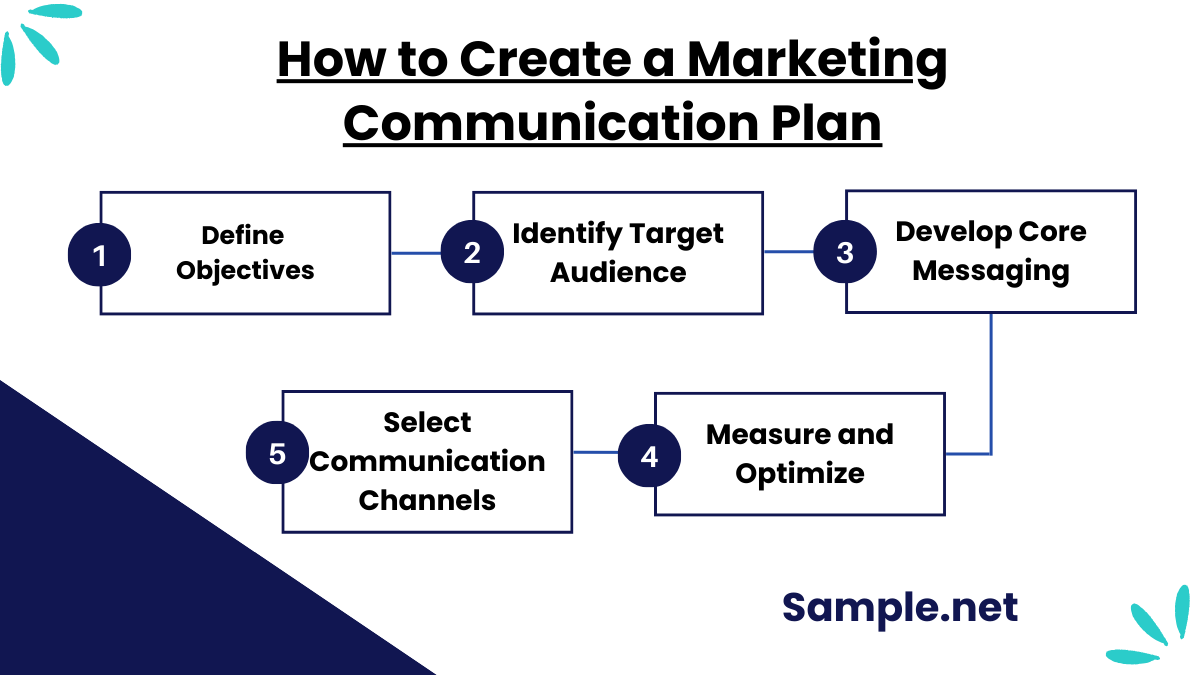
Step 1: Define Objectives
Begin by clearly outlining what you aim to achieve with your marketing communication efforts. Objectives could include increasing brand awareness, boosting website traffic, or launching a new product. Ensure your goals are SMART (Specific, Measurable, Achievable, Relevant, Time-bound). For example, if your objective is to increase website traffic by 20%, focus on strategies that align with this aim.
Step 2: Identify Target Audience
Research your audience demographics, interests, and behaviors. Understand their needs and pain points to craft messages that resonate. This step ensures you reach the right people with tailored communication. For instance, a fashion brand targeting Gen Z may prioritize Instagram and TikTok for engagement. You can also see more on Sales and Marketing Plans.
Step 3: Develop Core Messaging
Create a core message that aligns with your brand values and resonates with your audience. This message should be consistent across all channels. Ensure it’s clear, concise, and compelling to make an impact. For example, a sustainability-focused brand may emphasize eco-friendly practices in all communications.
Step 4: Select Communication Channels
Choose the most effective channels for reaching your audience. These could include social media, email marketing, SEO, or print media. Prioritize platforms where your audience is most active. For example, a B2B company may rely on LinkedIn and email newsletters.
Step 5: Measure and Optimize
Establish metrics to track the success of your communication efforts, such as engagement rates, click-through rates, or sales conversions. Use analytics tools to monitor performance and make data-driven adjustments. Continuous improvement ensures your plan remains effective and relevant.
A well-crafted Marketing Communication Plan is essential for achieving marketing success. It integrates various channels to deliver consistent and impactful messages, ensuring your brand connects meaningfully with its audience. By defining objectives, understanding your audience, and regularly optimizing strategies, businesses can build strong relationships and drive growth. With a clear roadmap, your marketing efforts are not only efficient but also more impactful, leading to sustainable success. You can also see more on Strategic Communication Plan.
FAQs
What role does marketing communication play?
Marketing communication facilitates the transfer of products, services, and ideas from producers to end users and establishes and maintains relationships with consumers, prospects, and other key stakeholders. Advertising and sales promotion will continue to play an integral role in marketing communication.
What are marketing communication strategies?
A corporation or individual’s marketing communications plan is the strategy they employ to reach their target market through various forms of communication. It involves the message (what is to be communicated), the medium (where the message will be displayed), and the intended audience (to whom your message is reaching).
What is successful customer interaction?
Good customer interaction skills involve controlling consumers’ expectations, being realistic, and speaking openly with them so that they may act and react accordingly. This is excellent customer engagement. You can also see more on B2B Marketing Plan.
What role does audience segmentation play in a communication plan?
Audience segmentation allows businesses to tailor their messages to specific groups based on demographics, behaviors, or preferences. This increases the likelihood of engagement and conversion, as the message resonates more effectively.
How does a marketing communication plan impact brand consistency?
A marketing communication plan ensures all channels deliver a unified message. By centralizing messaging efforts, it prevents inconsistencies that might confuse or alienate the audience, reinforcing brand identity.
What challenges can arise in implementing a communication plan?
Challenges include misaligned messaging, changing market conditions, or ineffective channel selection. Addressing these requires regular monitoring and flexibility to adapt the plan as needed. You can also see more on Event Marketing Plan.
